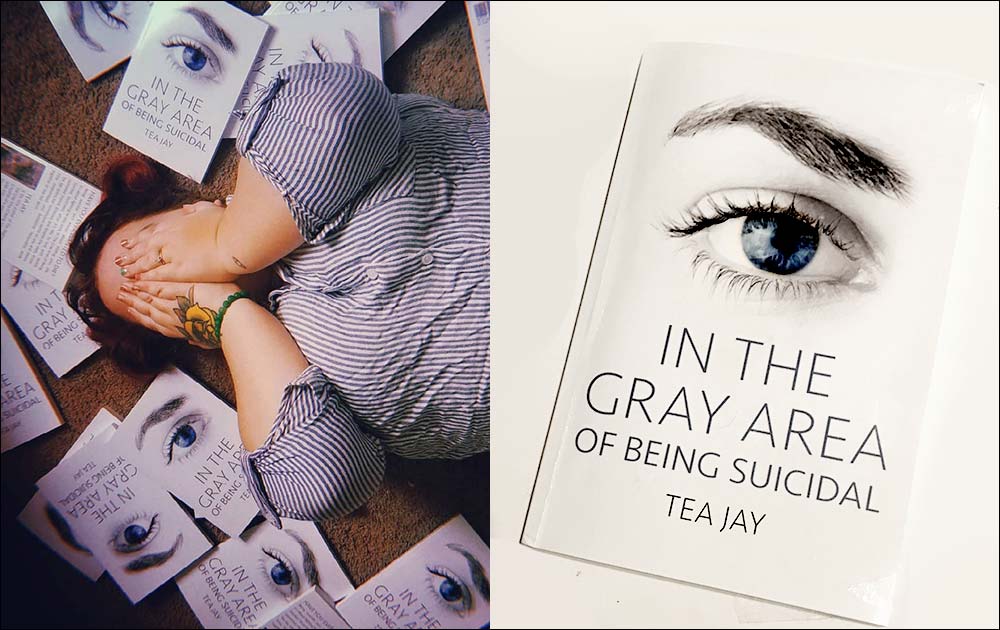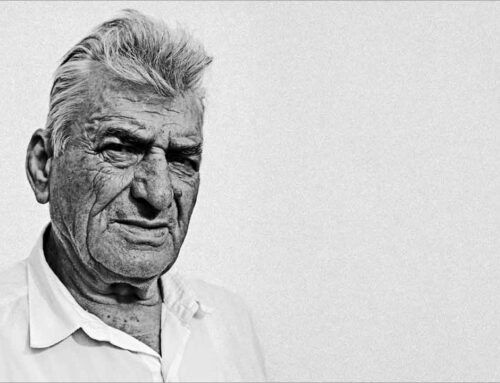Tea Jay has written many articles for Schizophrenic.NYC and now has an amazing book out called
In The Gray Area of Being Suicidal.
Here is the intro.
Mental illness is painful; I won’t be the first or the last person to tell you this in your life. It is difficult to live with, it is difficult to love someone with a mental health condition. But perhaps one of the most strenuous parts of mental illness is establishing a diagnosis.
My first diagnosis was ADHD in the seventh grade. Everyone was sure I had it; doctors, teachers, anyone close to me. I was a disruption in class, I had trouble remembering simple tasks, sometimes I would talk at a mile a minute. It made sense back then. I started medication to improve my work ethic, and although I eventually became more successful on these pills, they did throw me off into hysteric tantrums at the end of the day.
The next diagnosis was Bipolar Disorder (first NOS, then Bipolar I). It was frustrating to discover that not only could I not pay attention, but I couldn’t control my moods. Of course, both of these things were already known, but to understand that it was all in my head, that I physically could not regulate like “normal” people were so discouraging. Being labeled as Bipolar helped and hurt; it helped because I started getting better treatment than being on Vyvanse, but it hurt to have such a severe diagnosis before the age of eighteen.
As the years passed, I was diagnosed more; OCD, PTSD. I was collecting a rap sheet of illnesses. As more mental health conditions were thrown at me, I became slightly desensitized to it all. I was starting to feel like a science project, a specimen. I wanted to be a person, I didn’t want to have so many pieces to my identity! My fight or flight senses started to kick in. Instead of fighting for my humanity in the midst of all the medical jargon I shut down and denied my mental health.
It wasn’t until the arrival of my son in 2015 that I was ready to take on my illness, if not for me and to fight for peace of mind, but for my newborn son, who could someday have his own set of mental health issues. I wanted to pave the way to advocacy, fight the stigma, so no one else had to experience the pain and humiliation I faced when identifying my mental illness.
The following essays and stories detail my journey about discovering more about my mental health symptoms and identifying any problems that arise because of them. However, it is important to note that throughout this process of writing my inner thoughts and exposing my internal demons, my diagnosis did in fact change.
My current diagnosis is BPD (Borderline Personality Disorder) with dissociative and depressive episodes. ADHD has been completely ruled out, and although Bipolar is no longer part of my diagnosis, however, I am currently revisiting if Bipolar is one of the many pieces that make up my mental health. There’s no perfect science to these diagnoses. As we age, different symptoms arise. It is essential to take note that we are not curing these illnesses with treatment and therapy, but instead managing the symptoms that these disorders and such include.
My acute symptoms these days include depression, nesting, dissociation, short-term memory loss, anxiety, and suicidal ideation. I try to be mindful that I have always naturally leaned more towards mania, but due to some medical issues and societal changes, I have been leaning more into the depression end of the spectrum.
Throughout this book, different illnesses will be mentioned, as they were the illnesses my doctor identified me with at the time. It is important to pay much more mind to the symptoms presenting in the scenarios described. All of these illnesses experience similar properties. There isn’t a specific mold that these indicators all fall into; they overlap, mate, and cross boundaries. Mental illness strays away from perfection and structure.
Although my illness has changed (and I do personally resonate for the first time with the BPD diagnosis), my symptoms have stood the test of time. My depressions are still thick and numbing, my ideations still scare me half to death. All of the experiences mentioned in my stories are challenges I face on a day to day basis.
I am much further along on my recovery than the days I wrote these passages. Stability is now a reality. Sometimes, I long for the days when I wasn’t on medication and in treatment. I miss feeling…wild. These entries were written at the beginning of my recovery, the hardest days of my recuperation. I have put in too much effort and invested more time into my safety and steadiness than anything ever before. I am proud of the work I have put in. I recognize that healing is not linear, some days will be harder than most. Yet, I am so grateful for the lessons I have learned, identifying my symptoms, and working toward a more stable future.
You can Purchase it from Amazon
You can Purchase it from Barnes and Noble





